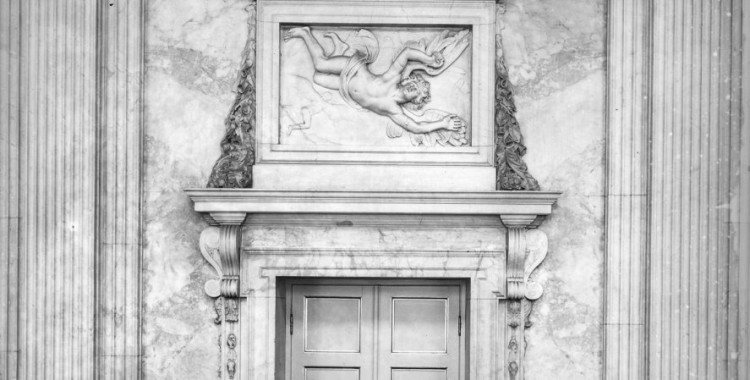
Resource Rewind: The Embarrassment of Riches
September 02, 2015
by Diana Greenwald | Filed in: Resources
Simon Schama, University Professor of Art History and History at Columbia University is—as his title implies—a scholar who bridges two disciplines. The Embarrassment of Riches (Knopf, 1987) is one of Schama’s earlier books. In it he weaves together the economic history and visual culture of the Dutch Golden Age. In particular, he explores how the Dutch negotiated the inherent contradiction between newfound wealth and protestant exhortations to be modest and frugal. In researching this topic with a methods described as “shameless ecclecticism” (p.8), Schama not only illuminates the Dutch case but also provides insights able to be applied to other settings. Like the other the “Resource Rewind” posts, this article will present three short excerpts from the book followed by a brief discussion.
“This does not mean that what I have to offer may be conveniently classified as bourgeois culture. The argument of the book resists the kind of functionalism that assumes culture to be an outcrop of social class, and that imagines a kind of behavioral segregation in which “elite culture”, “popular culture” and “bourgeois culture” arbitrarily inhabit the same space but pass by each other like ships in the night. (‘Introduction: The Batavian Temperament’, p. 4)
Schama’s introduction resists strict Marxist social divisions. T.J. Clark, Griselda Pollock, Robert Herbert and other “social historians of art” first used Marxist theory to analyze art in the 1960’s and ‘70’s in the work of. Neither this passage nor the book in general rejects the methods of the social history of art. Instead, it aims to complicate the Marxist theoretical framework and blur the strict social categories it imposes. Schama reminds us that while theory can provide a useful guide for analysis, it is often necessary to relax theoretical divisions in the face of complex historical realities.
“The golden mean, negotiating prudently between privation and excess, was the humanist’s ideal, and it affected the first generation of free Dutch in their kitchens, as it did in their wardrobes and their counting houses. It ought not to be confused with the sterner Calvinist commands to abstinence and frugal asceticism, wholly unrealistic as those were in the material circumstances of the Golden Century.” (‘Feasting, Fasting and Timely Atonement’, p. 159)
True to his assertion that it is impossible to apportion particular elements of culture to particular elements of society, Schama analyzes diverse components of material consumption. Eating habits, oil painting, architecture (both municipal and private), clothing, prints and many other elements of Dutch cultural life are included in the case studies of The Embarrassment of Riches. No phenomenon is too “high brow”—or “low brow”—to be excluded from the relevant cultural landscape.
Schama often uses art objects as brief illustrations of broader points rather than interpret them. The description of the decoration above the door to the bankruptcy chamber (see the featured image for this post) is one of the book’s longer engagements with a single work. The evocative description of the plaque is also one of the most memorable parts of the book. It demonstrates that economic and social historians should not shy away from spending words on formal analysis and interpretation.
“Of all the sculptured reliefs that festoon the interior of the Amsterdam town hall, none is more startling than the decoration over the door of the Bankruptcy Chamber—the Desolate Boedels Kamer…The plaque has a familiar humanist theme: the Fall of Icarus, symbolizing the reward for high-flying ambition and folly. But it is the decoration above the plaque that is more unconventional. It is the place where reality bites into platitude, for hanging in garlands are the actual, rather than emblematic, attributes of financial disaster. Empty chests, unpaid bills, worthless stock lie strewn around while among the detritus of a fortune scuttle a family of hungry rats.” (‘The Embarrassment of Riches,’ p. 343)
The Embarrassment of Riches is—with good reason—one of the few books that appear on the syllabi of both social history and art history courses.
Resource Rewind: Canvases & Careers >>
<< Resource Rewind: Wealth & the Demand for Art in Italy
